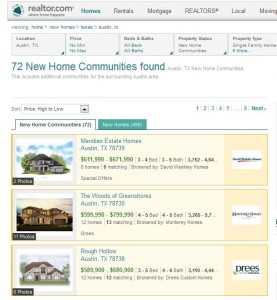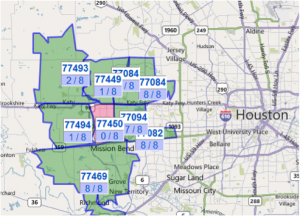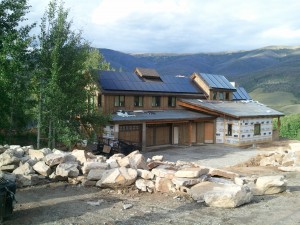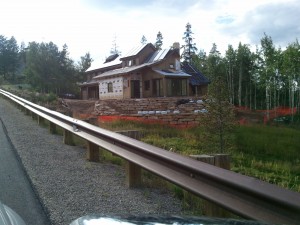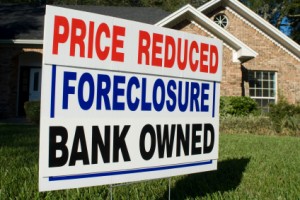 Best Practices from Fulton Homes and Other Top Builders from the BDX-Led Panel Discussion at The International Builders’ Show
Best Practices from Fulton Homes and Other Top Builders from the BDX-Led Panel Discussion at The International Builders’ Show
A recent Panel Discussion at The NAHB International Builders’ Show moderated by Jay McKenzie of Builders Digital Experience (BDX) provided builders with proven best practices to successfully sell new homes versus foreclosures.
Dennis Webb, VP Operations for Fulton Homes in Phoenix, shared with builders how his firm is selling hundreds of new homes annually — in a market where 46% of homes sold last year were foreclosures.
“Our main strategy to sell against foreclosures is to provide features and amenities in our homes and new home communities that foreclosures can’t–and don’t–offer,” Webb said.
“First, we build highly amenitized homes with many premium products and offerings included in our base price. Second, we’ve built to the latest EnergyStar standard—which took effect January 1, 2012—since October 1, 2010, which dramatically lowers energy costs. Third, in our largest community, we leverage our $100 million investment in infrastructure. We’re building new homes a mile away from the most successful employer in the state, Intel.”
The Fulton Homes website also provides an innovative Foreclosure Calculator consumers and real estate professionals can use to see the true cost to buy and repair a foreclosed home. It provides typical costs to repair or replace expensive items often damaged or missing in foreclosed homes.
Once a home shopper calculates the total cost to buy and repair a foreclosed home, a link in the Foreclosure Calculator shows how much home they can get at the same price- in a brand-new Fulton home plan that they select and personalize, with many upgrades included standard, in a brand-new home that’s under warranty, and that’s built to the latest energy standard.
Fulton Homes’ Foreclosure Calculator was a big reason why real estate expert Kenneth Harney chose to cover this BDX Panel Discussion at IBS in his nationally-syndicated column in The Washington Post, The Los Angeles Times and many other leading newspapers. To read Kenneth Harney’s column – and to see Fulton Homes Foreclosure Calculator – click here: http://wapo.st/yxBpZP
Other strategies that Fulton Homes is using to sell new homes versus foreclosures include:
- Build larger homes (from 3,000 to 5,000 square feet) based on the latest energy standards for sizable savings on utilities
- Build only single-story homes. No stairs to climb is a big benefit for many buyers
- 4 car garages standard in all homes, 6 car garages available
- Offer a huge selection of options for buyers to personalize their home. All 5 top executives of Fulton Homes came from retail prior to their years as home builders
- Fulton uses the Envision Option Selection/Management System from BDX and a state of the art, 13,000 square foot Design Center to make it easy for homebuyers to select –and upgrade—appliances, countertops, flooring, cabinets and more
Prefacing these valuable strategies from Fulton Homes, Charlie Engle of RealtyTrac provided builders with the latest data on foreclosures.
RealtyTrac data covers the key stages in the pre-foreclosure and foreclosure process. Engle provided builders with just-calculated data for 2011 not published before. RealtyTrac’s data covers 92% of American counties and is relied upon by media, governmental agencies and academia.
Since 2007, more than 8.2 million homes have started the foreclosure process and more than 4 million homes have become bank-owned homes. At present absorption rates, RealtyTrac estimates that there is a 16-month supply of bank-owned homes and a 49-month supply of delinquent homes.
While the statistics on foreclosures are sobering, as BDX’s Jay McKenzie pointed out in his segment of the Panel Discussion, The NAHB Wells Fargo Housing Market Index (HMI) has shown five consecutive monthly gains in new home sales and model home traffic. Jobs are returning (although more slowly than desired) and many other builders are successfully competing with foreclosures.
Foreclosed homes are sold “as is,” often with no inspection. Many foreclosures require major, often hidden repair costs. Financing a foreclosure can be more difficult than a new home. Some foreclosure buyers may also need to pay additional cash at close to catch up on past due taxes, HOA fees.
In sharp contrast, builders BDX spoke to are successfully citing many compelling benefits for buying a new home versus a foreclosure:
- New homes and the products they contain are brand new and under warranty
- Many new homes are far more energy-efficient than homes built just 5 years ago
- New homes reflect the way we live today
- Open floorplans, higher ceilings, multiple living spaces
- Larger master bathrooms and closets, media rooms, extensive storage
- New homes allow you to select the choices you want vs. inheriting someone else’s choices
- Pick the floorplan, elevation and bonus rooms and spaces you want
- Personalize your new home with appliances, cabinets, countertops and flooring
- New home options can be financed at unprecedented low and tax-deductible interest rates
- Advanced technologies insure year-round comfort and high indoor air quality
- A new home means many years of enjoyment, with much lower chances of costly repairs
Given the many advantages of new homes, it’s clear that builders can successfully compete with foreclosures. To access the slides from this Panel Discussion, click here: http://blog.thebdx.com/?p=551

